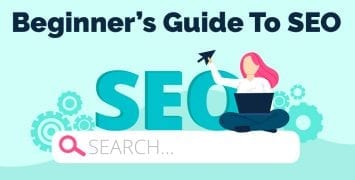Great content is the backbone of your SEO efforts. Your blog posts, infographics, webinars and other pieces of content help you increase brand awareness, connect with customers and drive sales.
But creating content is only a first step. Here’s a common problem:
Your content is dynamite. Except it’s not drawing in potential customers. Sound familiar?
This a common issues many SEO pros are faced with. But a solution is available. If your content is on target but your conversion rate is low, most likely you’re just not promoting that content on the right marketing channels.
Finding the best marketing channels for your content is often an easy fix. Here’s what you need to know:
The SEO Channel
This the biggest and arguably most important. Pretty much every website in the world will benefit from a great position in the search results.
Much of the optimization here will involve identifying and implementing the correct keywords into your content. Different types of content is better suited for different situations. Check out The Best Type of Content for Your SEO Goals to learn more.
There are numerous ways to find keywords. Google Keyword Planner is easy to use and popular. You want to start by identifying the top keywords in your niche. For instance, if you owned a pet grooming shop, you’d start with keywords like “dog grooming,” “pet spa” and “dog nail clipping.”
The PPC Channel
Search engine optimization is a great way to draw in free traffic. But SEO strategies can take a while to take hold. If you want to attract new potential customers quickly, paid advertising is often an effective strategy.
There are a variety of paid solutions used to drive traffic. Some of the most commonly used are the following:
- Google AdWords (PPC ads)
- Social Media Ads (Twitter, Facebook, LinkedIn and more)
There are opportunities for paid advertising just about everywhere. If you want to augment your search traffic, buy ads on Google or Bing. If your brand is popular on a particular social media platform, focus your ad buys there.
Don’t go big at first. You can waste a lot of money on advertising if you’re not careful. Start with small ad buys and expand as you’re able to analyze how the ads are affecting your conversion rate.
The “Other Blog” Channel
Your blog doesn’t have to be 100% unique. In fact, if you can’t find similar blogs online, that means one of two things:
- You’ve stumbled upon a one-in-a-million idea
- You’re heading down a path which readers aren’t going to be interested in
Most likely, you’ll want to stick to blog topics which are at least similar to those of your competition. But here’s the thing: Not every similar blog should be treated as direct competition.
Readers will follow multiple blogs across a single industry. This can be a “win win” for bloggers. You want to connect with other bloggers and work together to engage with as many readers as possible.
Reach out to other bloggers. Offer to write guest blogs for their page or host their guest posts on yours. For more information on this subject, check out how to Connect with Bloggers Using these Top Outreach Tools.
Joint content doesn’t have to be limited to blogs, either. You can create podcasts, conduct interviews and more. This gives both parties an opportunity to reach a larger audience of potential customers.
The Social Channel
Your success in the social channel is largely dependent on the product or service you provide. Certain niches generate more shares than others. Popular categories on social media include:
- Food
- Fashion
- Fitness Products
You don’t see a ton of construction crews, long-haul truckers and business offices setting the social media sphere on fire. That’s just the nature of the platform.
Will your brand perform well on social media? Here’s what to look at:
- Do you have shareable content? This could be blog posts, infographics, images or any other content you can post to a social media platform.
- What social media platforms are popular within your industry? Different platforms have different user bases. You want to find where your message will connect best.
Creating content is an important first step, but you can’t simply sit back and expect potential customers to come to you. Instead, you need to identify which channels will help you best connect with your target audience.




